RNA sequestration in P-bodies sustains myeloid leukaemia
- PMID: 39169219
- PMCID: PMC12042958
- DOI: 10.1038/s41556-024-01489-6
RNA sequestration in P-bodies sustains myeloid leukaemia
Abstract
Post-transcriptional mechanisms are fundamental safeguards of progenitor cell identity and are often dysregulated in cancer. Here, we identified regulators of P-bodies as crucial vulnerabilities in acute myeloid leukaemia (AML) through genome-wide CRISPR screens in normal and malignant haematopoietic progenitors. We found that leukaemia cells harbour aberrantly elevated numbers of P-bodies and show that P-body assembly is crucial for initiation and maintenance of AML. Notably, P-body loss had little effect upon homoeostatic haematopoiesis but impacted regenerative haematopoiesis. Molecular characterization of P-bodies purified from human AML cells unveiled their critical role in sequestering messenger RNAs encoding potent tumour suppressors from the translational machinery. P-body dissolution promoted translation of these mRNAs, which in turn rewired gene expression and chromatin architecture in leukaemia cells. Collectively, our findings highlight the contrasting and unique roles of RNA sequestration in P-bodies during tissue homoeostasis and oncogenesis. These insights open potential avenues for understanding myeloid leukaemia and future therapeutic interventions.
© 2024. The Author(s), under exclusive licence to Springer Nature Limited.
Conflict of interest statement
Ethics declarations
Competing interests
E.V.N. is co-founder, member of the Board of Directors, on the SAB, equity holder, and paid consultant for Eclipse BioInnovations, on the SAB of RNAConnect, and is inventor of intellectual property owned by University of California San Diego. E.V.N’s interests have been reviewed and approved by the Baylor College of Medicine in accordance with its conflict of interest policies. P.M. is a co-founder, member of the Board of Directors, equity holder, and paid consultant for OneChain Immunotherapeutics S.L. (Barcelona, Spain). This work has no connection with and is not related to the scientific interests of OneChain Immunotherapeutics. J.J.C. is a consultant for Thermo Fisher Scientific, 908 Devices, and Seer. The remaining authors declare no competing financial interests.
Figures
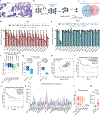
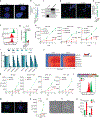

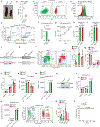

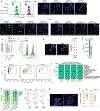
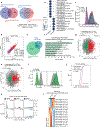



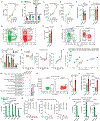
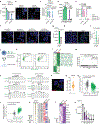
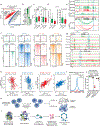
References
-
- Fabbri L, Chakraborty A, Robert C & Vagner S The plasticity of mRNA translation during cancer progression and therapy resistance. Nat Rev Cancer 21, 558–577 (2021). - PubMed
MeSH terms
Substances
Grants and funding
- 1R35GM147126-01/U.S. Department of Health & Human Services | NIH | Office of Extramural Research, National Institutes of Health (OER)
- P35298/Austrian Science Fund (Fonds zur Förderung der Wissenschaftlichen Forschung)
- 20-0269/AICR_/Worldwide Cancer Research/United Kingdom
- R35 GM147126/GM/NIGMS NIH HHS/United States
- 5T32DK060445-19/U.S. Department of Health & Human Services | NIH | Office of Extramural Research, National Institutes of Health (OER)
- CP22/00127/Ministry of Economy and Competitiveness | Instituto de Salud Carlos III (Institute of Health Carlos III)
- RR200040/Cancer Prevention and Research Institute of Texas (Cancer Prevention Research Institute of Texas)
- T32 DK060445/DK/NIDDK NIH HHS/United States
- P-35628/Austrian Science Fund (Fonds zur Förderung der Wissenschaftlichen Forschung)
- P30 CA125123/CA/NCI NIH HHS/United States
- P 35298/FWF_/Austrian Science Fund FWF/Austria
- F32 CA288043/CA/NCI NIH HHS/United States
- S10 RR024574/RR/NCRR NIH HHS/United States
- P41 GM108538/GM/NIGMS NIH HHS/United States
- 1F32CA288043-01/U.S. Department of Health & Human Services | NIH | Office of Extramural Research, National Institutes of Health (OER)
- CP19/00176/Ministry of Economy and Competitiveness | Instituto de Salud Carlos III (Institute of Health Carlos III)
- RR200079/Cancer Prevention and Research Institute of Texas (Cancer Prevention Research Institute of Texas)
LinkOut - more resources
Full Text Sources
Medical
Molecular Biology Databases

